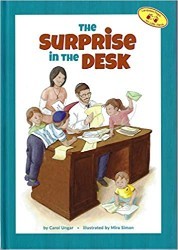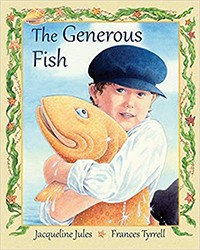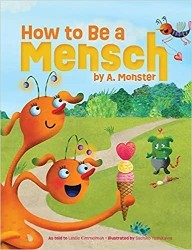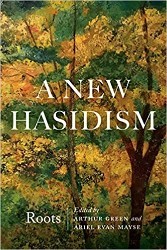Stop me if you’ve heard this one before; a duck and a hedgehog set off for the bicycle repair shop. Actually, Tuvia Dikman Oro and Menahem Halberstadt’s picture book featuring these animals is not a joke but rather a gentle interpretation of the guidelines for judging human behavior from the Pirke Avot (Ethics of the Fathers). The second century B.C.E. scholar, Joshua Ben Perahiah, cautioned, “Find for yourself a teacher, choose for yourself a friend, and judge everyone with the scale weighted in their favor.” This directive is the epigraph for But Perhaps, Just Maybe…, because it is not always easy to keep this tenet in mind, particularly when you are angry or frustrated.
Young readers will empathize with Duck and Hedgehog’s sense of urgency; their bicycles are broken and there are many obstacles on the road to solving their problem. The text describes the facts of their adventure but also includes many details that bring the characters to life. A zooming motorcycle raises a “billowing cloud of dust,” and a cat reports that her sister had “tripped and sprained the tip of her whisker.” The pictures share the quality of the words, with broadly drawn animals resembling those in folk tales, but also with touches of color and light that make them real. A hoopoe repairing a bicycle possesses the basic attributes of that bird but also wears big glasses and grasps a tool in her feathers. Light shines through the window and scattered implements leave shadows on the floor. When Mrs. Fox carries a tray of raspberry juice to her guests, she tries to balance it carefully, but readers can see the juice sloshing unevenly in pitcher and glasses.
Duck and Hedgehog have two different approaches to life, with Duck suspecting the worst and Hedgehog granting everyone the benefit of the doubt. Not only does Duck fail to understand Joshua Ben Perahiah’s advice, but he is annoyed by his friend’s apparent naiveté. After all, if Hedgehog is right, then Duck is possibly wrong. The dialogue between the two animals has the quality of a fable but also reflects the psychology of conflict in a way that children can understand. Hedgehog never mocks Duck’s insistence on everyone’s selfish motives. Instead, he offers imaginative scenarios for what might have caused each difficulty. Children learn that being open to a range of explanations, prefaced by “but perhaps, just maybe,” can mitigate their resentment and offer alternative ways of thinking.
Duck and Hedgehog’s opposing views of behavior would seem to imply that they are on two parallel paths, destined to never meet. But, in fact, just maybe, the book proves that we can sometimes admit when we are wrong and move forward. A working bicycle, a glass of raspberry juice, and even an improved friendship, may await.
Emily Schneider writes about literature, feminism, and culture for Tablet, The Forward, The Horn Book, and other publications, and writes about children’s books on her blog. She has a Ph.D. in Romance Languages and Literatures.





